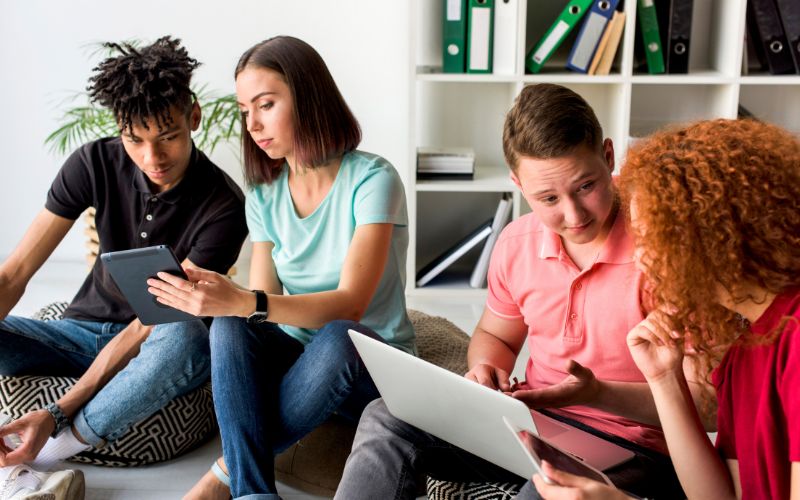
Struggling to keep your students interested and engaged? Discover 15 student engagement strategies that will make your classroom more interactive and your students more enthusiastic about learning.
Key Takeaways
- Student engagement significantly enhances academic success, personal development, and the cultivation of critical thinking and problem-solving skills.
- Strategies such as collaborative learning, active learning techniques, and technology integration are essential for fostering student engagement and enriching the learning experience.
- Regular feedback, clear course objectives, and the incorporation of real-world scenarios are vital in creating an engaging and motivating educational environment.
The Importance of Student Engagement
Student engagement involves active involvement, enthusiasm, and commitment toward learning. This concept encompasses behavioral engagement, which refers to how students physically act in the classroom, including participation in discussions and tasks. Cognitive engagement involves students’ thought processes, where they apply effort in learning and connect new information with prior knowledge. Emotional engagement pertains to students’ feelings about learning, influencing their enjoyment and interest in the subjects.
Student involvement significantly impacts their academic success and personal development. Engaged students are more likely to develop essential skills such as critical thinking and problem-solving. They are also 2.5 times more likely to succeed academically and 4.5 times more hopeful about their futures. Active engagement contributes to a love of learning, encouraging students to explore concepts beyond the classroom, as students engage with the material.
Engagement increases focus and fosters higher-level critical thinking. Regularly integrating these strategies helps educators create an equitable learning space. Recognizing the importance of student engagement lays the groundwork for exploring strategies to promote active learning.
Strategies to Foster Collaborative Learning
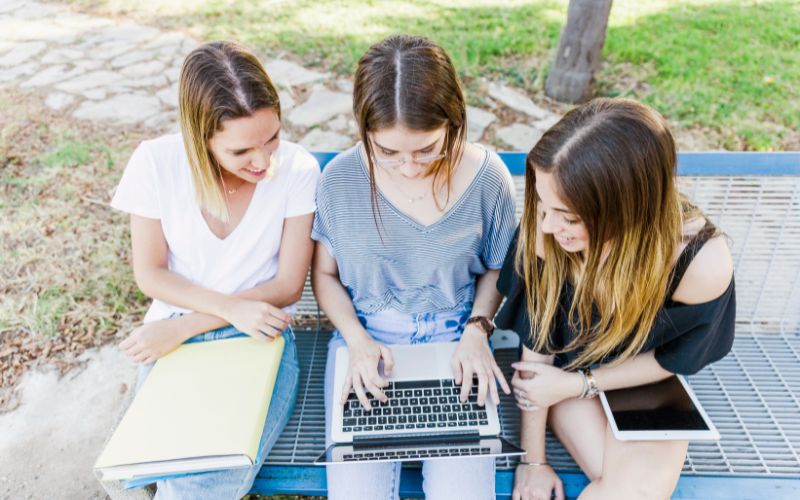
Collaborative learning is a powerful method to enhance student engagement. Encouraging students to work together fosters teamwork, critical thinking, and diverse perspectives. Collaborative tasks not only promote student interaction but also create a supportive learning environment where students can learn from one another.
The following strategies are designed to foster collaborative learning and increase student engagement.
Create Group Projects
Forming small groups for projects encourages students to seek help from teammates before approaching the teacher, enhancing accountability and communication. Group rewards motivate students to remind each other to stay focused during tasks. Clear expectations and goals are crucial for effective collaboration.
Deliberately forming diverse groups can enhance problem-solving by mixing students with different strengths. Group seating arrangements promote interaction and make presentations less intimidating for students. Mind warmup exercises and inter-group competitions help students develop camaraderie and shared responsibility.
Example: In a history class, students could be divided into groups to research different aspects of a historical event. Each group is tasked with creating a presentation that includes a timeline, key figures, and the event's impact on modern society. This project encourages students to collaborate, share insights, and engage deeply with the material, resulting in a comprehensive understanding of the topic.
Encourage Peer Teaching
Allowing students to explain concepts to each other enhances their engagement and participation in learning. When students explain concepts to their peers, they deepen their understanding and reinforce their knowledge. Peer review increases acceptance and trust in feedback among students, fostering a more collaborative learning environment.
Establishing norms and expectations for peer review ensures constructive interactions among students. Giving feedback after a draft that includes peer input supports the improvement of students’ learning processes. Peer teaching not only promotes student engagement but also helps students develop essential communication and collaboration skills.
Example: In a science class, students could be paired to teach each other about different parts of the human body. Each student is responsible for researching and presenting their assigned part, explaining its function and importance. This activity encourages students to engage deeply with the material, enhancing their understanding and confidence in the subject.
Use Think-Pair-Share
The Think-Pair-Share method is a collaborative learning technique that encourages students to first think individually about a question or topic, then discuss their thoughts with a partner, and finally share their insights with the larger group. This approach promotes reflective thinking and allows students to connect lessons to their prior knowledge.
Think-Pair-Share activities promote creative thinking and engage students in meaningful discussions.
Example: In an English literature class, students could be asked to think about the themes and characters of a novel. They would first jot down their thoughts individually, then pair up to discuss their ideas with a partner. Finally, each pair would share their insights with the rest of the class, fostering an engaging discussion that encourages students to delve deeper into the text and consider multiple perspectives.
Incorporate Active Learning Techniques
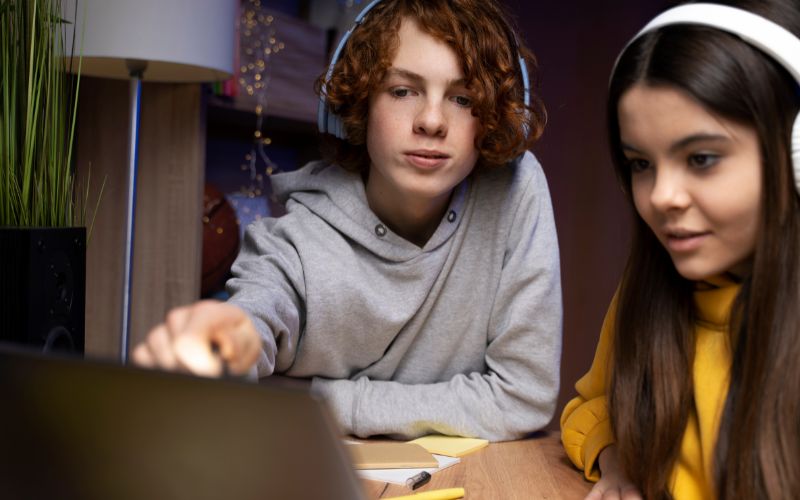
Active learning techniques focus on engaging students. They achieve this through interactive experiences and hands-on activities. These methods increase motivation, improve understanding, and promote retention. Incorporating active learning techniques creates an enriching educational experience that promotes collaboration, communication, and problem-solving abilities.
The following subsections explore specific active learning techniques that can enhance student engagement.
Interactive Simulations
Interactive simulations offer an engaging way for students to explore and learn abstract concepts. Virtual and augmented reality create immersive learning experiences that deeply engage students. These simulations help students visualize and understand complex scientific concepts in subjects like physics and biology.
These simulations promote hands-on learning and enhance student engagement.
Example: In a physics class, students can use a virtual reality simulation to explore the solar system. By interacting with planets and celestial bodies, students can better understand gravitational forces and orbital dynamics. This immersive experience allows students to engage deeply with the material, fostering a greater understanding of the concepts and promoting critical thinking skills.
In-Class Games
In-class games enhance student engagement by integrating competition into the learning experience. These games encourage students to participate actively and collaborate with their peers. Turning lessons into fun and interactive activities keeps students focused and motivated.
In-class games provide opportunities for informal assessments and immediate feedback, helping students recognize their progress and areas for improvement.
Example: In a math class, students could participate in a game called "Math Jeopardy," where they are divided into small groups and compete to solve math problems in various categories. Each correct answer earns points for their team, and the team with the most points at the end wins. This game encourages students to engage actively with the material, apply critical thinking skills, and collaborate with their peers to find the correct answers, all while making learning enjoyable and dynamic.
Problem-Based Learning
Problem-based learning engages students by encouraging them to solve real-world problems. This method involves presenting students with complex, real-life scenarios where they must collaborate to explore solutions. By applying their knowledge in practical settings, students develop critical thinking skills and enhance their understanding and retention of course material.
This approach gives students experience in real-world problem-solving, preparing them for future challenges. This approach not only promotes student engagement but also fosters a deeper understanding of the subject matter.
Incorporating problem-based learning creates a dynamic and interactive classroom environment that encourages active learning and participation.
Example: In an environmental science class, students could be presented with a scenario involving a local river that is experiencing pollution issues. The task would be to develop a sustainable plan to reduce pollution levels while considering economic, social, and ecological factors. Students would work in small groups to research potential solutions, evaluate their feasibility, and present their findings to the class. This activity encourages students to engage with real-world issues, apply critical thinking, and collaborate effectively.
Connect Lessons to Real-World Scenarios
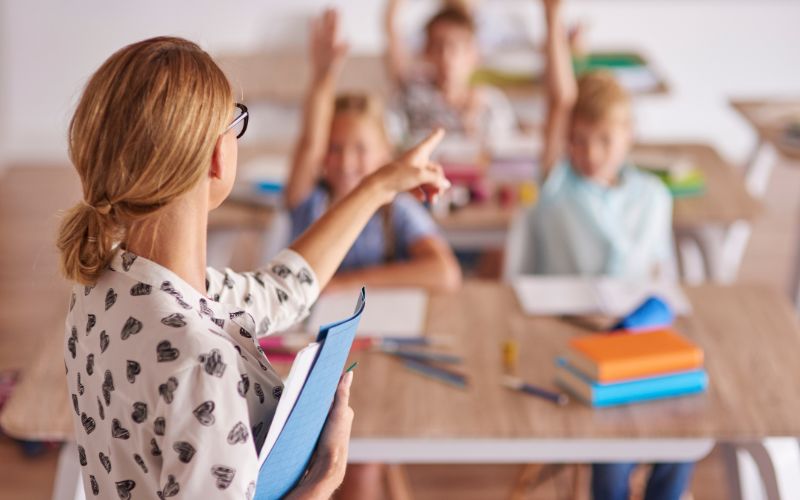
Connecting lessons to real-world scenarios helps students transfer knowledge effectively and understand its relevance. Making learning meaningful and relevant deepens student understanding and promotes greater engagement in the classroom. Linking course content to practical applications helps students recognize the intrinsic value of their education.
Current events, case studies, and guest speakers provide context and insight into real-world applications of the material. Hands-on experiences and problem-based learning further reinforce the relevance of course material and promote critical thinking and collaborative skills.
Example: In a business studies class, students could be tasked with developing a marketing plan for a local business. They would need to research the business's target audience, analyze competitors, and create a strategy that includes social media campaigns, events, and promotions. This project encourages students to apply theoretical concepts to real-world scenarios, enhancing their understanding and engagement with the material.
Connecting lessons to real-world scenarios creates an enriching educational experience that helps teach students and keeps students engaged and motivated.
Utilize Technology to Enhance Learning
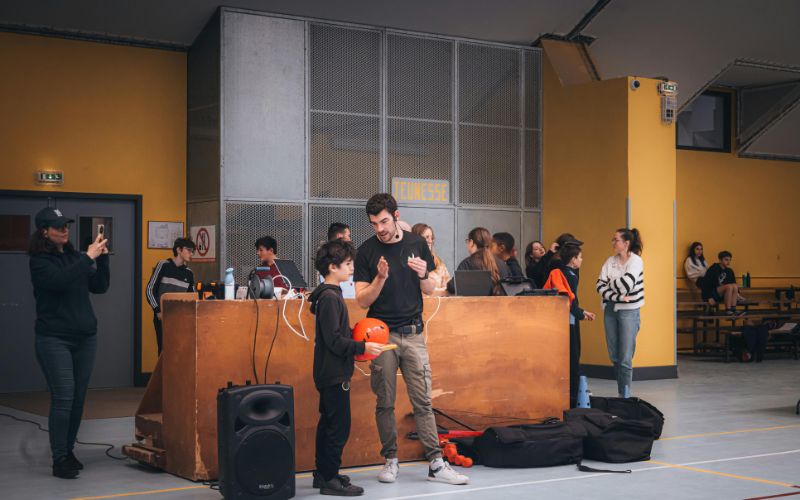
Technology boosts student engagement by providing interactive and personalized learning experiences. Digital tools like Google Classroom and Proprofs Quiz Maker foster real-time assessment and enhance student interaction. Personalized learning via technology allows students to progress at their own pace, significantly improving engagement and academic performance.
Integrating technology into the classroom encourages self-directed learning and increases motivation among students. Examples of technology used in the classroom include learning management systems, multimedia presentations, and collaboration platforms.
Utilizing technology creates immersive learning experiences that deeply engage students and promote active learning.
Example: In a language arts class, students could use an app like Flipgrid to create video responses to literature prompts. This allows students to express their interpretations and analyses creatively, fostering a deeper connection with the material. By sharing and viewing peers’ videos, students engage in meaningful discussions and gain diverse perspectives on the text, enhancing their critical thinking and communication skills.
Give Brain Breaks
Brain breaks are short activities that help students refresh and refocus. Regularly scheduled breaks throughout the day can significantly enhance student focus and productivity. These breaks allow students to process memories and improve their cognitive abilities. Brain breaks enhance concentration, lower stress levels, and help students return to work feeling focused and energized.
Implementing brain breaks optimizes engagement and cognitive performance, reducing anxiety and fatigue.
Example: In a classroom, teachers can incorporate a quick "Dance Break" where students stand up and dance to a fun song for a few minutes. This activity allows students to release pent-up energy, reduce cognitive load, and return to their tasks with renewed focus and enthusiasm. By integrating such engaging activities, students feel more motivated and ready to tackle the learning process with a refreshed mind.
Engage Students’ Interests

Engaging with students’ interests builds stronger relationships and rapport. Aligning instruction with students’ interests enhances their engagement and promotes active learning. Incorporating creative activities during breaks can stimulate students’ curiosity and boost their motivation.
Experiential learning helps students explore their interests and aptitudes, guiding them toward potential careers. Celebrating small achievements keeps student learning motivated and inspired to continue learning.
Example: In an art class, students could be encouraged to create projects based on their personal interests or hobbies. A student interested in music might create a visual art piece that represents their favorite song, while another interested in nature could design a project inspired by the changing seasons. This approach allows students to connect their personal passions with their learning, fostering a deeper engagement with the material and encouraging creative expression.
Promote Active Listening and Empathy
Active listening helps students set aside biases and fully engage with their peers’ perspectives, enhancing classroom understanding. Prioritizing active listening creates an environment where all students feel their voices are valued, promoting equity.
Active listening improves students’ communication skills and fosters trust in relationships. This foundational skill strengthens students’ ability to empathize with one another, leading to deeper connections and a more collaborative learning environment.
Example: In a social studies class, students could participate in a "Listening Circle" activity where each student shares their thoughts on a current event topic. While one student speaks, the others practice active listening by taking notes and asking clarifying questions. This encourages students to engage with diverse perspectives and develop empathy, contributing to a more inclusive and understanding classroom atmosphere.
Scaffold Tasks with Clear Checkpoints
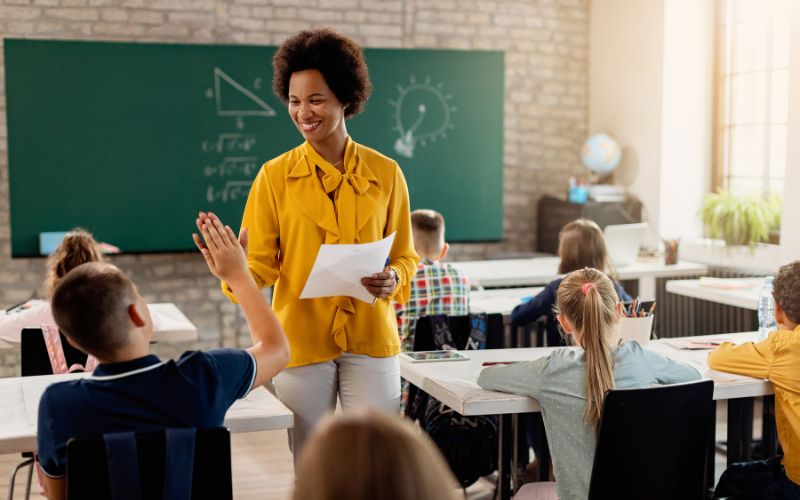
Scaffolding tasks is important as it prevents confusion and disengagement by breaking tasks into achievable steps. Offering students time to write during lessons helps them process their thoughts and prepares them for discussion. Clear checkpoints help students monitor their progress and take ownership of their learning.
This approach ensures that students stay focused and student motivation is maintained throughout the learning process.
Example: In a literature class, students might be assigned a research paper on a specific author. The teacher can scaffold the task by setting clear checkpoints, such as selecting a topic, submitting an outline, providing a draft, and finally submitting the final paper. Each checkpoint includes feedback to guide students, ensuring they stay engaged and motivated as they progress through the task, ultimately leading to a deeper understanding of the author and their works.
Encourage Reflective Practices
Reflective thinking enables students to connect new concepts with their existing knowledge. Reflective practices help learners identify their strengths and areas needing improvement in their academic performance. Reflective journals help students articulate their thoughts and understand various perspectives.
Regular prompts for reflection enhance students' critical thinking skills by guiding them to assess their learning journey. A supportive classroom environment encourages students to reevaluate their conclusions and thought processes, promoting deeper engagement and critical thinking.
Example: In a writing class, students could be asked to maintain a reflective journal where they document their writing process, challenges faced, and strategies used to overcome them. At the end of each week, students review their entries to identify patterns in their writing habits and areas for improvement. This reflective practice encourages students to engage deeply with their learning process, fostering a greater understanding of their development and enhancing their critical thinking skills.
Gamify Learning Activities
Gamification makes learning exciting by introducing game-like elements. Gamified learning activities transform lessons into interactive experiences with levels, rewards, and competition. This approach increases student engagement, enhances participation, and improves thinking, problem-solving, and collaboration skills. Incorporating elements like badges and points can make learning more rewarding and fun for students.
Friendly competitions in the classroom emphasize the learning aspect over winning, motivating students to improve their performance. Digital badges can serve as motivational tools, symbolizing achievement of specific skills.
In-class games and quizzes promote friendly competition among students. Gamified learning programs also contribute to this positive environment. Gamifying learning activities creates an engaging and dynamic classroom environment that promotes active learning and student engagement.
Example: In a history class, students could participate in a "History Quest" game where they earn points by completing various challenges related to historical events. Challenges could include solving puzzles, answering trivia questions, or creating short skits about historical figures. As students progress through the levels, they collect digital badges for their achievements, which can be displayed on a class leaderboard. This gamified approach encourages students to engage actively with the material, fostering a deeper understanding of historical events and promoting collaboration and critical thinking skills.
Use Diverse Media Formats
Using diverse media formats like videos and podcasts can significantly enhance student engagement. Various media types stimulate student interest by providing choices in how content is consumed.
Using multimedia formats caters to different learning styles and preferences among students, including visual, auditory, and kinesthetic. Effective multimedia use includes clear navigation instructions to ensure meaningful engagement with the content.
Example: In a geography class, students could be assigned to watch a documentary video about climate change and then listen to a related podcast featuring interviews with climate scientists. This multimedia approach allows students to engage with the topic through both visual and auditory means, catering to different learning styles. Afterward, students could participate in a class discussion to share insights and perspectives gained from the diverse media formats, enhancing their understanding and engagement with the material.
Emphasize the Importance of Course Objectives
Clear learning objectives help students understand what is expected of them and what to focus on during their studies. Setting course objectives makes it easier to keep students focused and actively learning. Defining course objectives and expectations keeps students engaged and helps them understand the significance of the material.
Well-defined objectives help students develop metacognitive skills, allowing them to monitor and adjust their learning strategies. Emphasizing course objectives creates a structured and goal-oriented learning environment that promotes student engagement.
Example: In a mathematics course, the teacher sets clear objectives for each unit, such as understanding and applying the Pythagorean theorem. Students are provided with a checklist of skills they need to master, including problem-solving and the ability to explain the theorem's real-world applications. Throughout the unit, students engage in activities that align with these objectives, such as measuring distances and angles in the classroom. This structured approach helps students recognize the relevance of what they are learning and keeps them motivated to achieve the course goals.
Implement Experiential Learning Opportunities
Experiential learning engages students in interactive tasks that lead to a deeper understanding of course goals and topics. This method promotes active learning and helps students apply theoretical knowledge in practical settings. Providing experiential learning opportunities creates a dynamic and engaging classroom environment that fosters participation and collaboration.
This approach not only enhances student engagement but also prepares students for real-world challenges.
Example: In a biology class, students could participate in a field study where they collect samples from a local ecosystem, such as a pond or forest. They would analyze these samples in the lab, identifying species and observing ecological interactions. This hands-on experience allows students to apply their theoretical knowledge in a practical setting, fostering a deeper understanding of ecological concepts and enhancing their engagement with the material.
Provide Regular Feedback and Opportunities for Improvement
Timely and meaningful feedback is crucial for helping students grasp their learning and apply knowledge effectively. Timely feedback enhances learner confidence and motivation while supporting achievement. Regular feedback maintains students’ motivation and encourages deeper engagement in their studies. Immediate feedback in gamified systems helps students identify areas for improvement quickly.
Progress bars visually represent students’ advancement towards goals, motivating them to achieve more. By providing regular feedback, educators can help students understand their progress and areas that need improvement. This approach ensures that students stay focused and motivated throughout the learning process.
Providing opportunities for improvement allows students to take ownership of their learning and strive for continuous growth.
Example: In a writing class, students could submit drafts of their essays to receive detailed feedback from the teacher. This feedback might include comments on structure, argument clarity, and grammar. Students would then have the opportunity to revise their essays based on the feedback, improving their writing skills and understanding of the assignment. This iterative process encourages students to engage deeply with the material, fostering a commitment to continuous learning and improvement.
Student Engagement Strategies Wrapped Up
In conclusion, student engagement is a multifaceted concept that encompasses behavioral, cognitive, and emotional involvement in learning. By implementing strategies such as fostering collaborative learning, incorporating active learning techniques, connecting lessons to real-world scenarios, utilizing technology, and providing regular feedback, educators can create a dynamic and interactive classroom environment. These strategies not only enhance student engagement but also promote critical thinking, problem-solving, and a love for learning. By prioritizing student engagement, educators can inspire and motivate students, setting them up for success both academically and personally.
Looking to further enhance student engagement and leadership skills in your classroom? Explore the transformative programs offered by 220 Youth Leadership. Visit 220 Youth Leadership to discover how their services can empower and inspire the next generation of leaders.
Frequently Asked Questions
What are the Big 8 engagement strategies?
The Big 8 engagement strategies encompass Expectations, Cueing, Tasking, Attention Prompts, Signals, Voice, Time Limits, and Proximity. Implementing these strategies can significantly enhance student engagement and learning outcomes.
What are the 4 C's of student engagement?
The 4 C's of student engagement are collaboration, communication, creativity, and critical thinking. These elements are essential in preparing students for future success.
Why is student engagement important in the learning process?
Student engagement is essential as it fosters active participation and enthusiasm for learning, resulting in enhanced academic performance and critical thinking skills. This commitment ultimately contributes to personal development.
How can group projects enhance student engagement?
Group projects significantly enhance student engagement by fostering teamwork and communication, which actively involves students and motivates them to stay focused on their tasks. This collaborative environment promotes accountability and a shared sense of purpose.
What are some benefits of using technology in the classroom?
Using technology in the classroom significantly enhances student engagement through interactive and personalized learning experiences. It also promotes real-time assessment and encourages self-directed learning, leading to a more effective educational environment.


